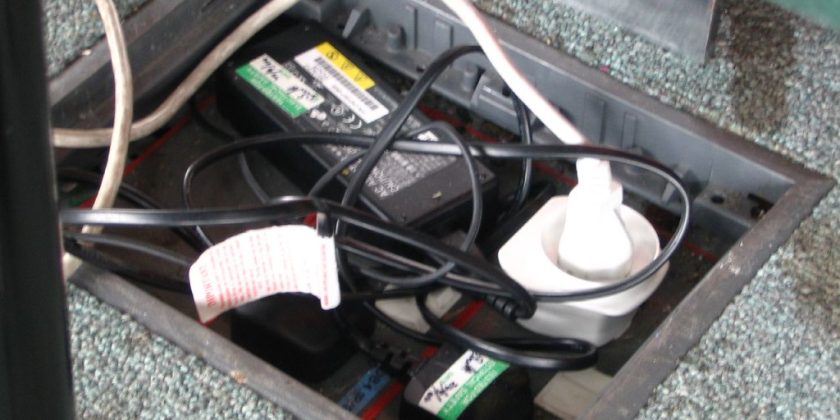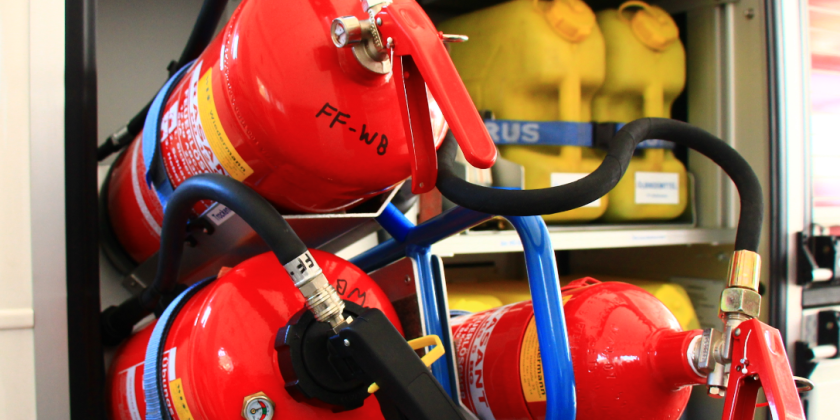In today’s world, improving the energy efficiency of our homes is more important than ever. Whether you’re a homeowner looking to reduce your energy bills or a landlord aiming to meet new regulations, enhancing your Energy Performance Certificate (EPC) rating from E to A can make a significant difference. This comprehensive guide will provide you with straightforward, practical steps on how to improve your EPC rating from E to A, ensuring your property is both eco-friendly and cost-effective. Dive in to discover actionable tips and strategies that will help you achieve a top-tier EPC rating.
Understanding EPC Ratings
What is an EPC Rating?
An Energy Performance Certificate (EPC) rating measures the energy efficiency of a property on a scale from A to G, with A being the most efficient and G the least. It provides potential buyers or renters with an idea of how much energy a building uses and what the associated costs might be. The rating is determined by an accredited assessor who evaluates various aspects of the property, including insulation, heating systems, and energy-saving features. An improved EPC rating not only helps reduce energy bills but also increases the property’s market value and makes it more attractive to environmentally-conscious individuals. Understanding your current EPC rating is the first step in making meaningful improvements. Knowing how to improve EPC rating from E to A can lead to significant long-term benefits for both your wallet and the environment.
Importance of a High EPC Rating
A high EPC rating is crucial for several reasons. Firstly, it directly impacts your energy bills. A more efficient property consumes less energy, which translates to lower utility costs. Secondly, properties with high EPC ratings are more attractive to potential buyers or tenants, as they promise reduced running costs and a smaller carbon footprint. Additionally, having a high rating can increase your property’s market value. In many regions, legislation is tightening around energy performance, meaning that properties with poor ratings may face legal repercussions or restrictions. Lastly, improving your EPC rating contributes to broader environmental goals by reducing the overall carbon emissions associated with your property. Understanding how to improve EPC rating from E to A can thus offer multiple benefits, from financial savings to compliance with regulations and contributing to a more sustainable future.
EPC Rating Categories
EPC ratings are categorised from A to G, each representing a different level of energy efficiency. Category A, the highest rating, indicates excellent energy efficiency and minimal energy wastage. Properties in this category use the least energy and have the lowest energy bills.
Category B also signifies a high level of efficiency but with slightly higher energy consumption than Category A. Categories C and D are considered average, indicating moderate energy efficiency. Properties in these categories may have some energy-saving measures but still have room for improvement.
Category E, where many older properties may fall, represents lower efficiency, leading to higher energy consumption and costs. Categories F and G are the lowest, indicating poor energy performance with significant room for improvement.
Understanding these categories can help you identify where your property stands and how to improve EPC rating from E to A by implementing necessary energy-saving measures.
Assessing Your Current EPC Rating
Getting an EPC Assessment
Obtaining an EPC assessment is the first step in improving your property’s energy efficiency. An accredited energy assessor conducts the assessment, examining various aspects of your home, including insulation, heating systems, windows, and overall energy usage. The assessor will then generate a report that details your current EPC rating and provides recommendations for improvement.
To get an EPC assessment, you can contact a registered assessor through the government’s official EPC register or use reputable service providers. The cost of an assessment varies but is generally affordable, making it a worthwhile investment for long-term energy savings.
Once the assessment is complete, you’ll receive an EPC certificate valid for ten years. This certificate not only helps you understand your property’s energy efficiency but also guides you on how to improve EPC rating from E to A, offering actionable insights and tailored recommendations.
Analysing Your EPC Report
Once you have your EPC report, the next step is to carefully analyse it. The report provides a detailed breakdown of how energy-efficient your property currently is, highlighting areas where improvements can be made. Key sections to focus on include the current energy efficiency rating, potential rating after improvements, and specific recommendations for enhancing efficiency.
The recommendations section is particularly useful as it offers tailored advice on measures like upgrading insulation, installing double-glazed windows, or replacing an old boiler. Each suggestion comes with an estimated cost and the potential impact on your EPC rating.
Understanding these details is crucial for devising a practical plan to improve your rating. By following the report’s recommendations, you can strategically address the weaknesses in your property’s energy performance. Analysing your EPC report thoroughly is essential for knowing how to improve EPC rating from E to A effectively and efficiently.
Identifying Key Areas for Improvement
Identifying key areas for improvement is crucial for effectively boosting your EPC rating. Begin by focusing on the most energy-inefficient aspects of your property as highlighted in your EPC report. Common areas that often need attention include insulation, heating systems, and windows.
Insulation is usually the first and most impactful area to address. Poor insulation leads to significant heat loss, increasing energy consumption. Upgrading loft, wall, and floor insulation can dramatically enhance your home’s energy efficiency.
Next, consider your heating system. Old boilers and inefficient heaters consume more energy. Replacing these with modern, energy-efficient alternatives can make a substantial difference.
Windows are another critical area. Single-glazed windows are far less efficient than double or triple-glazed options. Upgrading to double glazing not only improves insulation but also reduces noise pollution.
By systematically targeting these key areas, you can effectively improve your EPC rating from E to A, making your property more energy-efficient and cost-effective.
Energy Efficiency Improvements
Insulation and Draught Proofing
Improving insulation and draught proofing is one of the most effective ways to enhance your EPC rating. Proper insulation helps retain heat, reducing the need for excessive heating and thereby lowering energy consumption. Start with loft insulation, as a significant amount of heat can escape through the roof. Adding or upgrading loft insulation is a straightforward and cost-effective step.
Next, consider wall insulation. Cavity wall insulation involves filling the gap between walls, which can substantially improve energy efficiency. For older properties with solid walls, internal or external wall insulation might be necessary.
Draught proofing is another simple yet impactful measure. Identify areas where cold air enters your home, such as around doors, windows, and chimneys. Use draught excluders, sealants, and weather stripping to seal these gaps.
By focusing on insulation and draught proofing, you can make significant strides in improving your EPC rating from E to A, making your home warmer and more energy-efficient.
Upgrading Heating Systems
Upgrading your heating system is a critical step in improving your EPC rating. Older heating systems are often inefficient, consuming more energy and driving up utility bills. Replacing an outdated boiler with a modern, energy-efficient model can significantly enhance your property’s energy performance.
Consider installing a condensing boiler, which recovers more heat from the exhaust gases, improving efficiency. Additionally, integrating smart heating controls, such as programmable thermostats, allows for better management of your heating, ensuring that energy is used only when needed.
Another option is to explore renewable heating systems, such as heat pumps or solar thermal panels. Heat pumps, which extract heat from the air or ground, are highly efficient and can drastically reduce your energy consumption. Solar thermal panels use sunlight to heat water, providing a renewable and cost-effective heating solution.
By upgrading your heating system, you can make a substantial impact on your home’s energy efficiency, moving closer to an EPC rating of A.
Installing Energy-Efficient Windows
Installing energy-efficient windows is a crucial step in enhancing your property’s EPC rating. Traditional single-glazed windows permit substantial heat loss, leading to higher energy consumption. Upgrading to double or triple-glazed windows can significantly improve your home’s thermal efficiency.
Double-glazed windows consist of two glass panes separated by an insulating layer of air or gas, which reduces heat transfer. Triple glazing goes a step further, adding another pane and layer for even better insulation. These windows not only help retain heat during winter but also keep your home cooler in summer, reducing the need for additional heating or cooling.
Moreover, energy-efficient windows often come with specialised coatings that reflect heat back into the room, enhancing their effectiveness. They also help reduce noise pollution, providing a more comfortable living environment.
By installing energy-efficient windows, you can make a noticeable improvement in your home’s energy performance, moving closer to achieving an EPC rating of A.
Using Renewable Energy Sources
Solar Panels and EPC Ratings
Installing solar panels is a highly effective way to boost your EPC rating. Solar panels convert sunlight into electricity, providing a renewable and sustainable energy source for your home. This not only reduces your reliance on grid electricity but also lowers your energy bills.
Solar panels are particularly beneficial for properties aiming to achieve higher EPC ratings. The energy generated can be used to power household appliances and heating systems, significantly reducing overall energy consumption. Moreover, any surplus electricity can often be sold back to the grid, providing an additional financial benefit.
The installation of solar panels is recognised in EPC assessments, often leading to a higher rating. However, the initial cost can be substantial, so it’s important to consider this investment in light of long-term savings and environmental benefits.
By incorporating solar panels, you take a significant step towards achieving an A rating, making your property more energy-efficient and eco-friendly.
Heat Pumps and Their Benefits
Heat pumps are an excellent renewable energy solution that can significantly improve your EPC rating. They work by extracting heat from the air, ground, or water and transferring it into your home. This process is highly efficient, often generating three to four units of heat for every unit of electricity consumed.
There are different types of heat pumps, including air-source, ground-source, and water-source. Air-source heat pumps are the most common and easiest to install. Ground-source and water-source heat pumps are more efficient but require more extensive installation work.
The benefits of heat pumps extend beyond energy efficiency. They can provide both heating and cooling, making them versatile for year-round use. Additionally, they produce lower carbon emissions compared to traditional heating systems, contributing to a smaller environmental footprint.
By installing a heat pump, you can reduce your energy consumption and costs, making a significant step towards achieving an A rating on your EPC, while also supporting sustainable living.
Other Renewable Energy Options
Beyond solar panels and heat pumps, several other renewable energy options can help improve your EPC rating. Wind turbines, for instance, can generate electricity for your home if you have sufficient space and favourable wind conditions. While more common in rural areas, they can be a viable option for generating sustainable energy.
Biomass boilers are another effective solution, burning organic materials like wood pellets or chips to produce heat. They are particularly useful for properties off the gas grid and can significantly reduce carbon emissions compared to traditional fossil fuels.
Solar thermal systems, distinct from photovoltaic panels, use sunlight to heat water. These systems can provide a substantial portion of your hot water needs, reducing reliance on conventional heating methods.
Finally, micro-hydro systems can generate electricity from flowing water if you have access to a stream or river. Though less common, they offer a reliable and continuous energy source.
Exploring these renewable energy options can provide additional pathways to enhance your EPC rating, contributing to a more energy-efficient and environmentally friendly home.
Monitoring and Maintaining Improvements
Regular Energy Audits
Conducting regular energy audits is essential for maintaining and further improving your EPC rating. An energy audit assesses your property’s current energy consumption and identifies areas where efficiency can be enhanced. These audits are typically carried out by professional energy assessors who use specialised tools to measure energy performance.
Regular audits help you stay informed about your property’s energy usage patterns and the effectiveness of any improvements you have made. They can highlight emerging issues, such as deteriorating insulation or inefficient appliances, allowing you to address them promptly.
By scheduling periodic energy audits, you can ensure that your property remains as energy-efficient as possible. This proactive approach not only helps in maintaining a high EPC rating but also keeps your energy bills in check and supports your sustainability goals.
Incorporating regular energy audits into your maintenance routine ensures continuous improvement and helps you stay ahead in the quest to improve EPC rating from E to A.
Keeping Up with New Technologies
Staying abreast of new technologies is vital for maintaining a high EPC rating. The field of energy efficiency is continually evolving, with new innovations regularly emerging to help reduce energy consumption and improve performance. Smart home technologies, for instance, offer advanced energy management capabilities. Devices such as smart thermostats, energy-efficient lighting, and home automation systems can optimise energy use, making homes more efficient.
Additionally, advancements in renewable energy technologies, such as more efficient solar panels and advanced heat pump systems, can provide greater energy savings. Keeping informed about these developments enables you to make timely upgrades and improvements.
Researching and adopting new technologies not only helps in maintaining your EPC rating but also ensures you benefit from the latest energy-saving innovations. By regularly updating your home’s energy systems, you can continue to improve your property’s efficiency and keep your energy bills low.
Embracing new technologies is a proactive strategy for achieving and sustaining an EPC rating of A.
Long-Term Benefits of High EPC Ratings
Achieving and maintaining a high EPC rating offers numerous long-term benefits. Firstly, it significantly reduces your energy bills by ensuring your property operates more efficiently. Over time, these savings can offset the initial investment in energy-efficient upgrades and technologies.
Secondly, a high EPC rating enhances the market value of your property. Energy-efficient homes are more attractive to potential buyers and tenants, who value lower running costs and reduced environmental impact. This can make your property easier to sell or rent at a premium price.
Additionally, properties with high EPC ratings are better positioned to meet future regulations and standards. Governments are increasingly focusing on sustainability, and stricter energy performance requirements are likely. Being proactive in improving your EPC rating ensures your property remains compliant and avoids potential penalties.
Lastly, a high EPC rating contributes to environmental sustainability by reducing carbon emissions. This not only benefits the planet but also aligns with broader societal goals.
Overall, the long-term benefits of a high EPC rating make it a worthwhile investment for any property owner.



